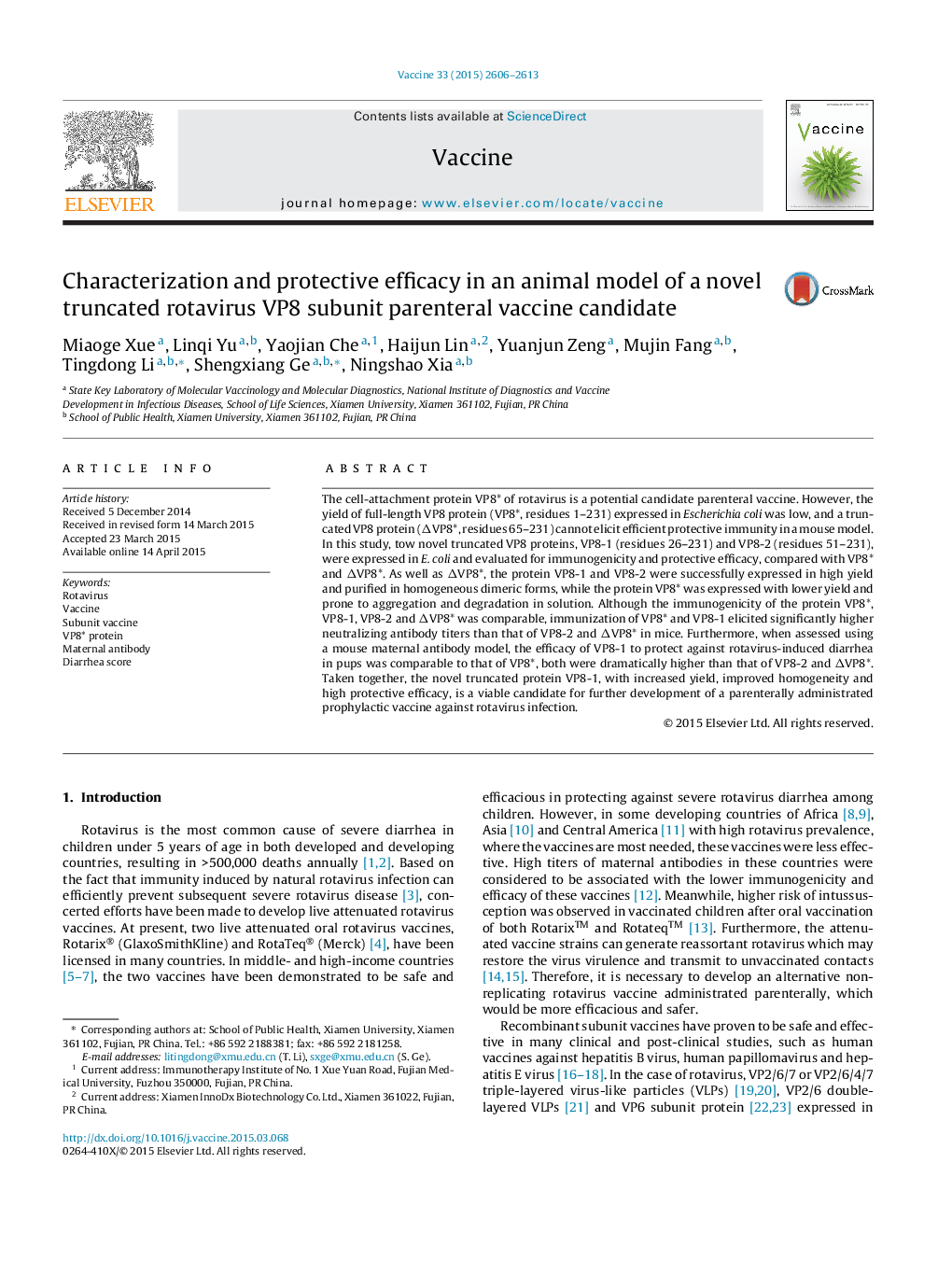| Article ID | Journal | Published Year | Pages | File Type |
|---|---|---|---|---|
| 10965406 | Vaccine | 2015 | 8 Pages |
Abstract
The cell-attachment protein VP8* of rotavirus is a potential candidate parenteral vaccine. However, the yield of full-length VP8 protein (VP8*, residues 1-231) expressed in Escherichia coli was low, and a truncated VP8 protein (ÎVP8*, residues 65-231) cannot elicit efficient protective immunity in a mouse model. In this study, tow novel truncated VP8 proteins, VP8-1 (residues 26-231) and VP8-2 (residues 51-231), were expressed in E. coli and evaluated for immunogenicity and protective efficacy, compared with VP8* and ÎVP8*. As well as ÎVP8*, the protein VP8-1 and VP8-2 were successfully expressed in high yield and purified in homogeneous dimeric forms, while the protein VP8* was expressed with lower yield and prone to aggregation and degradation in solution. Although the immunogenicity of the protein VP8*, VP8-1, VP8-2 and ÎVP8* was comparable, immunization of VP8* and VP8-1 elicited significantly higher neutralizing antibody titers than that of VP8-2 and ÎVP8* in mice. Furthermore, when assessed using a mouse maternal antibody model, the efficacy of VP8-1 to protect against rotavirus-induced diarrhea in pups was comparable to that of VP8*, both were dramatically higher than that of VP8-2 and ÎVP8*. Taken together, the novel truncated protein VP8-1, with increased yield, improved homogeneity and high protective efficacy, is a viable candidate for further development of a parenterally administrated prophylactic vaccine against rotavirus infection.
Related Topics
Life Sciences
Immunology and Microbiology
Immunology
Authors
Miaoge Xue, Linqi Yu, Yaojian Che, Haijun Lin, Yuanjun Zeng, Mujin Fang, Tingdong Li, Shengxiang Ge, Ningshao Xia,
